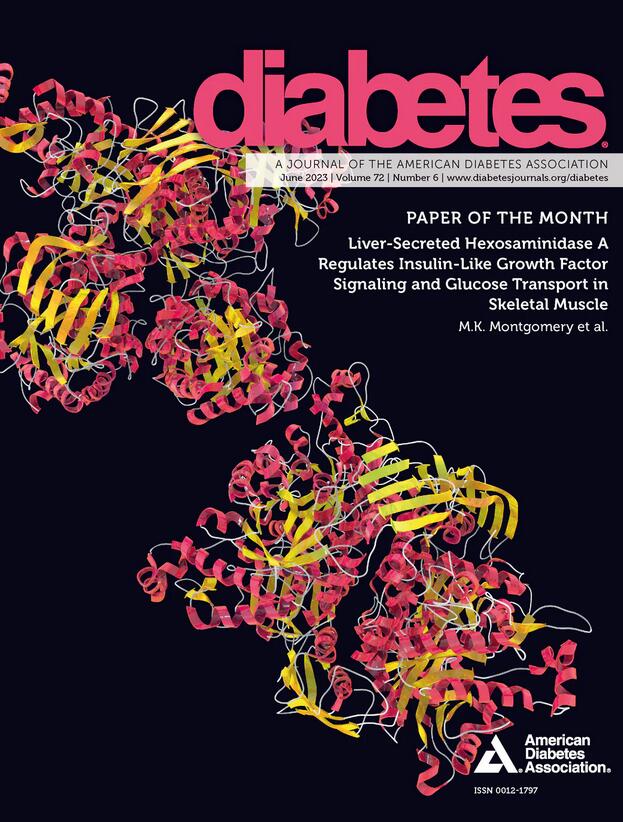Induction of a Müller glial-specific protective pathway safeguards the retina from diabetes induced damage
IF 6.2
1区 医学
Q1 ENDOCRINOLOGY & METABOLISM
引用次数: 0
Abstract
Diabetes can lead to cell-type-specific responses in the retina, including vascular lesions, glial dysfunction and neurodegeneration, all of which contribute to retinopathy. However, the molecular mechanisms underlying these cell type-specific responses, and the cell types that are sensitive to diabetes have not been fully elucidated. Employing single cell transcriptomics, we profiled the transcriptional changes induced by diabetes in different retinal cell types in rat models as the disease progressed. Rod photoreceptors, a subtype of amacrine interneurons, and Müller glia exhibited rapid responses to diabetes at the transcript levels. Genes associated with ion regulation were upregulated in all three cell types, suggesting a common response to diabetes. Furthermore, focused studies revealed that while Müller glia initially increased the expression of genes playing protective roles, they cannot sustain this beneficial effect. We explored one of the candidate protective genes, Zinc finger protein 36 homolog (Zfp36), and observed that depleting Zfp36 in rat Müller glial cells in vivo using AAV-based tools exacerbated diabetes-induced phenotypes, including glial reactivation, neurodegeneration, and vascular defects. Over-expression of Zfp36 slowed the development of these phenotypes. This work unveiled retinal cell types that are sensitive to diabetes and demonstrated that Müller glial cells can mount protective responses through Zfp36.诱导 Müller 神经胶质特异性保护途径,保护视网膜免受糖尿病引起的损伤
糖尿病会导致视网膜中细胞类型特异性反应,包括血管病变、神经胶质功能障碍和神经变性,所有这些都会导致视网膜病变。然而,这些细胞类型特异性反应的分子机制以及对糖尿病敏感的细胞类型尚未完全阐明。利用单细胞转录组学,我们分析了糖尿病在大鼠模型中不同视网膜细胞类型随着病情发展而诱导的转录变化。杆状光感受器、羊膜中间神经元的一种亚型和Müller胶质细胞在转录本水平上表现出对糖尿病的快速反应。与离子调节相关的基因在这三种细胞类型中都出现了上调,这表明它们对糖尿病有共同的反应。此外,重点研究还发现,虽然Müller胶质细胞最初会增加起保护作用的基因的表达,但它们无法维持这种有益的效应。我们探索了候选保护基因之一锌指蛋白 36 同源物(Zfp36),并观察到使用基于 AAV 的工具在体内消耗大鼠 Müller 胶质细胞中的 Zfp36 会加剧糖尿病诱导的表型,包括胶质细胞再激活、神经变性和血管缺陷。Zfp36的过度表达减缓了这些表型的发展。这项研究揭示了对糖尿病敏感的视网膜细胞类型,并证明了Müller神经胶质细胞可通过Zfp36做出保护性反应。
本文章由计算机程序翻译,如有差异,请以英文原文为准。
求助全文
约1分钟内获得全文
求助全文
来源期刊

Diabetes
医学-内分泌学与代谢
CiteScore
12.50
自引率
2.60%
发文量
1968
审稿时长
1 months
期刊介绍:
Diabetes is a scientific journal that publishes original research exploring the physiological and pathophysiological aspects of diabetes mellitus. We encourage submissions of manuscripts pertaining to laboratory, animal, or human research, covering a wide range of topics. Our primary focus is on investigative reports investigating various aspects such as the development and progression of diabetes, along with its associated complications. We also welcome studies delving into normal and pathological pancreatic islet function and intermediary metabolism, as well as exploring the mechanisms of drug and hormone action from a pharmacological perspective. Additionally, we encourage submissions that delve into the biochemical and molecular aspects of both normal and abnormal biological processes.
However, it is important to note that we do not publish studies relating to diabetes education or the application of accepted therapeutic and diagnostic approaches to patients with diabetes mellitus. Our aim is to provide a platform for research that contributes to advancing our understanding of the underlying mechanisms and processes of diabetes.
 求助内容:
求助内容: 应助结果提醒方式:
应助结果提醒方式:


